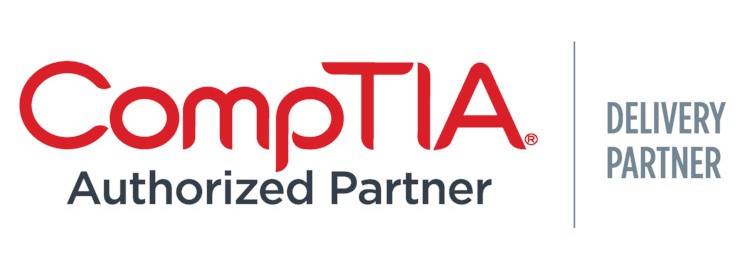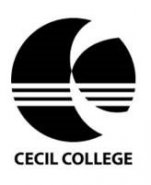
- Description
- Objectives
- Outline
- Materials
- Certification
- System Requirements
- Watch a Demo
The CompTIA A+ certification is the starting point for a career in IT and CompTIA Network+ certification is the sign of a qualified networking professional. IT Professionals in A+ and Network + exhibit qualifications to work in areas such as: network technologies, installation and configuration, media and topologies, management, and security. Candidate job roles include network administrator, network technician, network installer, help desk technician and IT cable installer.
CompTIA A+
We offer you the most effective way to earn your CompTIA A+ certification. CompTIA A+ is the starting point for a career in IT. The exam covers maintenance of PCs, mobile devices, laptops, operating systems and printers. Two exams are necessary to be certified: exam 220-1101 and 220-1102.
CompTIA A+ 220-1101 covers the fundamentals of computer technology, installation and configuration of PCs, laptops, mobile devices and related hardware, and basic networking. CompTIA A+ 220-1102 covers the skills required to install and configure PC operating systems, security, as well as software troubleshooting.
This course includes access to a hands-on Practice-Lab which will allow candidates to have training in the practical application of the course concepts without having to buy any additional software and will prepare them for success on the certification exam.
Prerequisite(s): Students should have basic keyboarding and computer skills, and be comfortable navigating the internet.
CompTIA Authorized Partner ID: 1298427

CompTIA Network +
The CompTIA Network+ certification is the sign of a qualified networking professional. Our course is designed to teach the CompTIA Network+ skills necessary to prepare for the N10-009 certification exam. CompTIA Network+ certification is vendor-neutral, validates technical competency in network technologies, installation and configuration, media and topologies, management, and security. CompTIA Network + is designed to ensure a common level of understanding for IT Professionals.
This course includes access to a hands-on Practice-Lab which will allow candidates to have training in the practical application of the course concepts without having to buy any additional software and will prepare them for success on the certification exam.
Prerequisite We recommend candidates possess CompTIA A+ certification and networking experience.
CompTIA Authorized Partner ID: 1298427

** Course Subject to Change.
CompTIA A+
By the end of this course, you will be able to:
- Identify the basics of PC hardware, configuration, and wireless networks
- Recall the steps for troubleshooting hardware, including mobile devices, printers, and networking
- Recognize the steps for installing and configuring operating systems and software
- List ways to work with network services and operational procedures
- Identify security concepts and technologies
CompTIA Network +
By the end of this course, you will be able to:
- Recall the principles of networking including IP addressing, subnetting, troubleshooting, topology selection, backbones, and segments
- Identify the steps for installing and configuring different network types
- Recognize the basics of ethernet and networking devices
- List methods for documenting, monitoring, and managing security threats
- Identify software, hardware and troubleshooting tools
CompTIA A+
CompTIA A+ 220-1101 Module 1
PC Hardware
- Motherboards, Processors, and Memory
- Identifying Motherboard Components
- Purposes of Processors
- Memory Terms
- Cooling Systems
- Installing and Configuring Expansion Cards
- Understanding Storage Devices
- Understanding Power Supplies
CompTIA A+ 220-1101 Module 2
Peripherals, Cables, Connectors and Printers
- Peripherals and Expansions
- Installing and Configuring Expansion Cards
- Connectors and Cables
- Understanding Print Technologies and Imaging Processes
- Installing and Sharing Networked Printers
- Performing Printer Maintenance
CompTIA A+ 220-1101 Module 3
Networking Fundamentals and TCP/IP
- Understanding Networking Principles
- Identifying Common Network Hardware
- Understanding TCP/IP
- TCP/IP Structure
- IPv4 Address Classes
- Scopes and Reservations
- Spam Management
- IPv6 Addressing
CompTIA A+ 220-1101 Module 4
SOHO Networks, Virtualization and Cloud Computing
- Wireless Networking Technologies
- 802.11 Networking Standards
- Bluetooth Networking
- Installing and Configuring SOHO Networks
- Internal Networking Connections
- Installing Network Infrastructure
- Network Services
- Virtualization
- Cloud Computing
CompTIA A+ 220-1101 Module 5
Mobile Device Hardware, Connectivity and Application Support
- Working with Laptop and Mobile Device Hardware
- Laptops vs. Desktops
- Disassembling and Reassembling Laptops
- Mobile Connectivity
- Cellular Networking Connectivity
- Mobile Hotspots and Tethering
- Wi-Fi Connectivity
- Blue Connectivity
- Mobile App Support
CompTIA A+ 220-1101 Module 6
Troubleshooting
- Troubleshooting Best Practice Methodology
- Motherboards
- CPUs, RAM and Power Problems
- Storage Drives and RAID Arrays
- Video, Projector, Display Issues
- Common Mobile Device Issues
- Printer Problems
- Networking Problems
Outline: A+ 220-1102
CompTIA A+ 220-1101 Module 7
Operating System Adminstration
- Understanding Operating Systems
- Understanding Applications
- Introduction to Windows 10
- Windows Configuration
- Windows Registry
- Disk Management
CompTIA A+ 220-1101 Module 8
Windows, macOS and Linux
- Installing and Upgrading Windows
- Command-Line Tools
- Networking in Windows
- MacOS and Linux
- Applications on macOS
- Best Practices
- Basic Linux Commands
CompTIA A+ 220-1101 Module 9
Security Concepts
- Physical Security Concepts
- Logical Security
- Malware
- Mitigating Software Threats
- Social Engineering Attacks, Threats, and Vulnerabilities
- Exploits and Vulnerabilities
- Windows OS Security Settings
- Web Browser
- SOHO Network Wireless and Wired
- Mobile Device Security
CompTIA A+ 220-1101 Module 10
Troubleshooting Operating Systems and Scripting
- Troubleshooting Common Microsoft Windows OS Problems
- Troubleshooting Security Issues
- Best Practices for Malware Removal
- Mobile OS Issues
- Scripting
- Remote Access
CompTIA A+ 220-1101 Module 11
Safety Concerns and Documentation
- Understanding Safety Procedures
- Understanding Environmental Controls
- Understanding Policies, Licensing, and Privacy
- Documentation and Professionalism
- Change Management Best Practices
- Disaster Prevention and Recovery
- Demonstrating Professionalism
**Outlines are subject to change, as courses and materials are updated.**
CompTIA Network +
CompTIA Network+ Module 1
Networking Concepts
- Introduction to Networks
- Physical Network Topologies
- Topology Selection, Backbones, and Segments
- Open Systems Interconnection Specifications
- Internetworking Models
- OSI Reference Model
- Introduction to Encapsulation
- Modulation Techniques
CompTIA Network+ Module 2
Networking Topologies and Ethernet Specifications
- Physical Media
- Cable Properties
- Wiring Standards
- Installing Wiring Distributions
- Network Basics
- Ethernet Basics
- Ethernet at the Data Link Layer
- Ethernet at the Physical Layer
- Ethernet over Other Standards
CompTIA Network+ Module 3
Networking Devices and Internet Protocol
- Common Network Connectivity Devices
- Specialized Devices
- Planning and Implementing a Basic SOHO Network
- Switches and Bridges at the Data Link Layer
- Hubs at the Physical Layer
- Environmental Considerations
- Introducing TCP/IP
- TCP/IP and the DoD Model
- The Host-to-Host Layer Protocols
- The Internet Layer Protocols
- Data Encapsulation
CompTIA Network+ Module 4
IP Addressing, Subnetting and Troubleshooting
- IP Terminology
- The Hierarchical IP Addressing Scheme
- IPv4 Address Types
- Internet Addressing
- Internet Protocol Version 6 (IPv6)
- Subnetting Basics
- Troubleshooting IP Addressing
- Introduction to Network Address Translation (NAT)
- How NAT Works
CompTIA Network+ Module 5
IP Routing and Routing Protocols
- Routing Basics
- The IP Routing Process
- Testing Your IP Routing Understanding
- Static and Dynamic Routing
- Routing Protocol Basics
- Distance Vector Routing Protocols
- Link State Routing Protocols
- High Availability
- Hot Standby Router Protocol (HSRP)
- IPv6 Routing Protocols
CompTIA Network+ Module 6
Virtual LANs and Wireless Networking
- Networking Before Layer 2 Switching
- Switching Services
- Spanning Tree Protocol
- Virtual LANs
- VLAN Trunking Protocol
- Introduction to Wireless Technology
- The 802.11 Standards
- Comparing 802.11 Standards
- Wireless Network Components
- Installing a Wireless Network
CompTIA Network+ Module 7
Remote Network Access and Network Availability
- Site-to-Site VPN
- Client-to-Site VPN
- Remote Desktop Connection
- Virtual Network Computing
- Jump Box/Host
- Performance Monitoring/Metrics/Sensors
- SNMP
- Protocol Analyzer/Packet Capture
- Flow Data
- Log Aggregation
CompTIA Network+ Module 8
Policies and Disaster Recovery
- Plans and Procedures
- Hardening and Security Policies
- Common Documentation
- IP Address Management
- Common Agreements
- Load Balancing
- Multipathing
- Network Interface Card (NIC) Teaming
- Facilities and Infrastructure Support
- Backups
- Testing
CompTIA Network+ Module 9
Data Center Architecture and Troubleshooting
- Cloud Computing
- Infrastructure as Code
- Software-Defined Networking
- Zero Trust Architecture
- Troubleshooting Steps
- Troubleshooting Tips
CompTIA Network+ Module 10
Network Tools, Commands and Security Concepts
- Software Tools
- Address Resolution Protocol
- Basic Networking Device Commands
- Common Security Terminology
- Regulatory Compliance
- Technology-Based Attacks
- Hardening Security
- Physical Security Concepts
**Outlines are subject to change, as courses and materials are updated.**
Ed4Career is committed to being both environmentally conscious and making it easier for you to study! We’re making your education mobile! All of our textbooks are now provided as eTextbooks*. You can access them on your laptop, tablet, or mobile device and can study anytime, anywhere.
The move away from physical books to eTextbooks means you get the latest, most up-to-date version available. This also makes your training more accessible, so you can study anywhere you have your phone or tablet. The best part is that all materials are included in your training cost so there are NO extra fees for books!**
*A few courses still have physical materials.
CompTIA A+
Upon successful completion of this course, students will be prepared to sit for the CompTIA A+ 220-1101 & 220-1102 certification exams.
CompTIA Network +
Upon successful completion of this course, students will be prepared, in part, to sit for the CompTIA Exam N10-009: CompTIA Network+ certification exam.
** Certification exams are not included in the cost of the course.**
Internet Connection
- Broadband or High-Speed - DSL, Cable, and Wireless Connections
*Dial-Up internet connections will result in a diminished online experience. Classroom pages may load slowly and viewing large audio and video files may not be possible.
Hardware Requirements
- Processor - 2GHz Processor or Higher
- Memory - 1 GB RAM Minimum Recommended
PC Software Requirements
- Operating Systems - Windows 7 or higher
- Microsoft Office 2013 or higher. Also, you could use a general Word Processing application to save and open Microsoft Office formats (.doc, .docx, .xls, .xlsx, .ppt, .pptx)
- Internet Browsers - Google Chrome is highly recommended
- Cookies MUST be enabled
- Pop-ups MUST be allowed (Pop-up Blocker disabled)
- The Kindle Reader App or VitalSource Bookshelf App are needed for many of our courses (No special equipment needed. This can be downloaded for FREE onto your computer.)
- PowerPoint Viewer (if you do not have PowerPoint)
- Adobe PDF Reader
- QuickTime, Windows Media Player &/or Real Player
MAC Software Requirements
- Operating Systems - Mac OS x 10 or higher with Windows
- Mac office programs or a Word Processing application to save and open Microsoft Office formats (.doc, .docx, .xls, .xlsx, .ppt, .pptx)
- Internet Browsers- Google Chrome is highly recommended
- Cookies MUST be enabled
- Pop-ups MUST be allowed (Pop-up Blocker disabled)
- The Kindle Reader App or VitalSource Bookshelf App are needed for many of our courses (No special equipment needed. This can be downloaded for FREE onto your computer.)
- PowerPoint Viewer (if you do not have PowerPoint)
- Adobe PDF Reader
- Apple QuickTime Media Player
